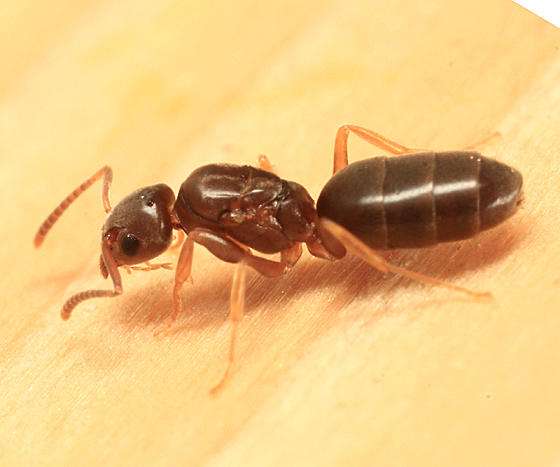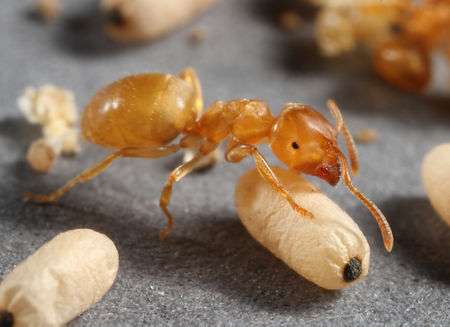
The ant genus Tapinoma, which derives from the Greek letter v in the low position, is a member of the Dolichoderinae subfamily. The genus now consists of 74 identified species that are found in both tropical and temperate climates worldwide. Additionally, they appear to be all-around foragers.
Habitat
Members nest in a wide range of environments, from meadows, open fields, and woodlands to inside of buildings. They are generic foragers. The majority of species build their nests underground, usually under stones or tree logs, although some also do so in plant holes, insect galls, or garbage piles, or beneath the bark of logs and stumps.
Diet
Tapinoma tend to aphids or coccids frequently and are general scavengers, but they prefer honeydew.
Identification
Worker
The first gastral segment projects anteriorly and obscures the petiole in dorsal view in mandibles with three to seven teeth, approximately seven denticles, and an indistinct basal angle. The dorsal face of the propodeum is shorter than the declivitous face, and the pronotum typically lacks erect hairs.
Male
First gastral segment projects anteriorly, occasionally hiding the petiole in dorsal view, petiolar scale is reduced, and there are 0–3 denticles on the mandible. Scape length is substantially longer than the length of funicular segments 1–2–3.
The absence of a petiolar node (sometimes much reduced), the lack of a basal mandibular angle, and the four apparent gastral tergites allow workers to be distinguished from those of all other dolichoderinae genera.

Biology
The majority of Tapinoma species reside in trees, and some of them coexist closely with myrmecophyte plants. Additionally, they appear to be all-around foragers.
Table





